
POSTPARTUM GARDEN, 2024
DUOSHOW with Johnny Mae Hauser, curated by Brandei Estes. November 14 until November 17, 2024. Homecoming Gallery, London, United Kingdom.
In Postpartum Garden, Aldo van den Broek transforms the garden into a profound metaphor for the raw realities of motherhood, drawing from his own experience as a father and observer. Immersing himself in the cycles of nature, they lived for months in a tent near fertile soil, mixing earth and roots directly into his paints. This visceral connection to the natural world allowed the weather—rain, wind, and sun—to actively shape his materials, mirroring the uncontrollable forces of life, growth, and transformation.
“Motherhood is often romanticized in idealized ‘pink clouds,’” van den Broek reflects. “But the reality is far more complex—a constant, brutal dance of growth and surrender.” As a father, van den Broek stands both inside and outside this experience, bearing witness to its strength and sacrifice while remaining unable to fully enter its reality. His layered canvases embody these tensions, exploring the dualities of creation and loss, nurturing life and mourning identity. They capture the emotional weight of cultivating growth alongside the mourning of lost freedom and the creation of a new self.
In contrast, his velvet series strips away complexity, offering symbols of transformation rendered with stark simplicity. The untouched velvet, soft yet unyielding, reflects the fragility of new life and the permanence of responsibility. These works amplify vulnerability, distilling the experience of parenthood into quiet yet powerful expressions.
The garden, like any system of creation, is a reckoning—a fragile yet unyielding negotiation between nurture and surrender, beauty and decay, freedom and responsibility. Its cycles echo the fragility of all systems we rely on to endure. Through these works, van den Broek challenges us to witness motherhood in its unvarnished truth and to ask ourselves: Can we truly honor resilience without facing the sacrifices it demands?
![Aldo van den Broek - The Garden, 2024 - Acrylics, soil and mesh fabric and wire mesh on cardboard and wood on wooden panels on wooden frame - 208 cm x 272 cm]()
![Aldo van den Broek - The Observer, 2024 - Acrylics on velvet on wooden frame - 180 cm x 135 cm]()
![Aldo van den Broek - Petrichor, 2024 - Acrylics on velvet on wooden frame - 180 cm x 135 cm]()
In Postpartum Garden, Aldo van den Broek transforms the garden into a profound metaphor for the raw realities of motherhood, drawing from his own experience as a father and observer. Immersing himself in the cycles of nature, they lived for months in a tent near fertile soil, mixing earth and roots directly into his paints. This visceral connection to the natural world allowed the weather—rain, wind, and sun—to actively shape his materials, mirroring the uncontrollable forces of life, growth, and transformation.
“Motherhood is often romanticized in idealized ‘pink clouds,’” van den Broek reflects. “But the reality is far more complex—a constant, brutal dance of growth and surrender.” As a father, van den Broek stands both inside and outside this experience, bearing witness to its strength and sacrifice while remaining unable to fully enter its reality. His layered canvases embody these tensions, exploring the dualities of creation and loss, nurturing life and mourning identity. They capture the emotional weight of cultivating growth alongside the mourning of lost freedom and the creation of a new self.
In contrast, his velvet series strips away complexity, offering symbols of transformation rendered with stark simplicity. The untouched velvet, soft yet unyielding, reflects the fragility of new life and the permanence of responsibility. These works amplify vulnerability, distilling the experience of parenthood into quiet yet powerful expressions.
The garden, like any system of creation, is a reckoning—a fragile yet unyielding negotiation between nurture and surrender, beauty and decay, freedom and responsibility. Its cycles echo the fragility of all systems we rely on to endure. Through these works, van den Broek challenges us to witness motherhood in its unvarnished truth and to ask ourselves: Can we truly honor resilience without facing the sacrifices it demands?










ECHO, 2024
A solo exhibition (open for public), Amsterdam Court House, April 3 until June 27, 2024.
What happens when power crumbles? In ECHO, Aldo van den Broek confronts institutional authority through paintings constructed from discarded materials, positioned against the polished, monumental walls of the Amsterdam Courthouse. This juxtaposition reveals the fragility of identity under authority, challenging the illusion of strength projected by these structures. Van den Broek’s cracked, textured works stand as ruptures in the pristine facade of power, exposing its vulnerabilities.
Van den Broek’s focus is not just on systems but on the individuals within them. “So many different people pass judgment—each with their own bias, their own mood. Does justice shift under the weight of a bad day or an empty stomach? Who decides which crime is forgivable and which life is worth erasing? If no one stands above the law, isn’t it all just chaos cloaked in the illusion of order?” These questions challenge the myth of objectivity in authority, exposing the deeply human flaws that shape institutional power.
Discarded materials—cigarette butts, cardboard, textile, soil, and wire mesh—things unseen or unwanted in the routines of everyday life, become symbols of resilience and rejection, echoing the identities institutions seek to erase. Van den Broek uses these fragments to create jagged textures and layered surfaces that feel almost torn from the walls themselves, their broken forms mirroring the scars of the systems they critique. His fragmented silhouettes and sharp contrasts embody fractured roles—judge, defendant, observer—leaving the viewer to question their own place within these dynamics. “Judge, defendant, observer—who cares? They’re just masks. My work rips them off and asks: what’s left when power strips you bare?”
In the shadow of the courthouse’s polished walls, ECHO critiques the idea that authority protects, exposing its contradictions and the human cost of its structures. Do you see yourself in the judge’s robe, the defendant’s chair, or the shadow of the courthouse? The answer may be all three. His paintings demand reflection, forcing us to confront the fragile systems we uphold and the roles we play within them. In the end, the question isn’t whether these systems will fail—but whether we will recognize ourselves in their cracks.
Van den Broek’s focus is not just on systems but on the individuals within them. “So many different people pass judgment—each with their own bias, their own mood. Does justice shift under the weight of a bad day or an empty stomach? Who decides which crime is forgivable and which life is worth erasing? If no one stands above the law, isn’t it all just chaos cloaked in the illusion of order?” These questions challenge the myth of objectivity in authority, exposing the deeply human flaws that shape institutional power.
Discarded materials—cigarette butts, cardboard, textile, soil, and wire mesh—things unseen or unwanted in the routines of everyday life, become symbols of resilience and rejection, echoing the identities institutions seek to erase. Van den Broek uses these fragments to create jagged textures and layered surfaces that feel almost torn from the walls themselves, their broken forms mirroring the scars of the systems they critique. His fragmented silhouettes and sharp contrasts embody fractured roles—judge, defendant, observer—leaving the viewer to question their own place within these dynamics. “Judge, defendant, observer—who cares? They’re just masks. My work rips them off and asks: what’s left when power strips you bare?”
In the shadow of the courthouse’s polished walls, ECHO critiques the idea that authority protects, exposing its contradictions and the human cost of its structures. Do you see yourself in the judge’s robe, the defendant’s chair, or the shadow of the courthouse? The answer may be all three. His paintings demand reflection, forcing us to confront the fragile systems we uphold and the roles we play within them. In the end, the question isn’t whether these systems will fail—but whether we will recognize ourselves in their cracks.



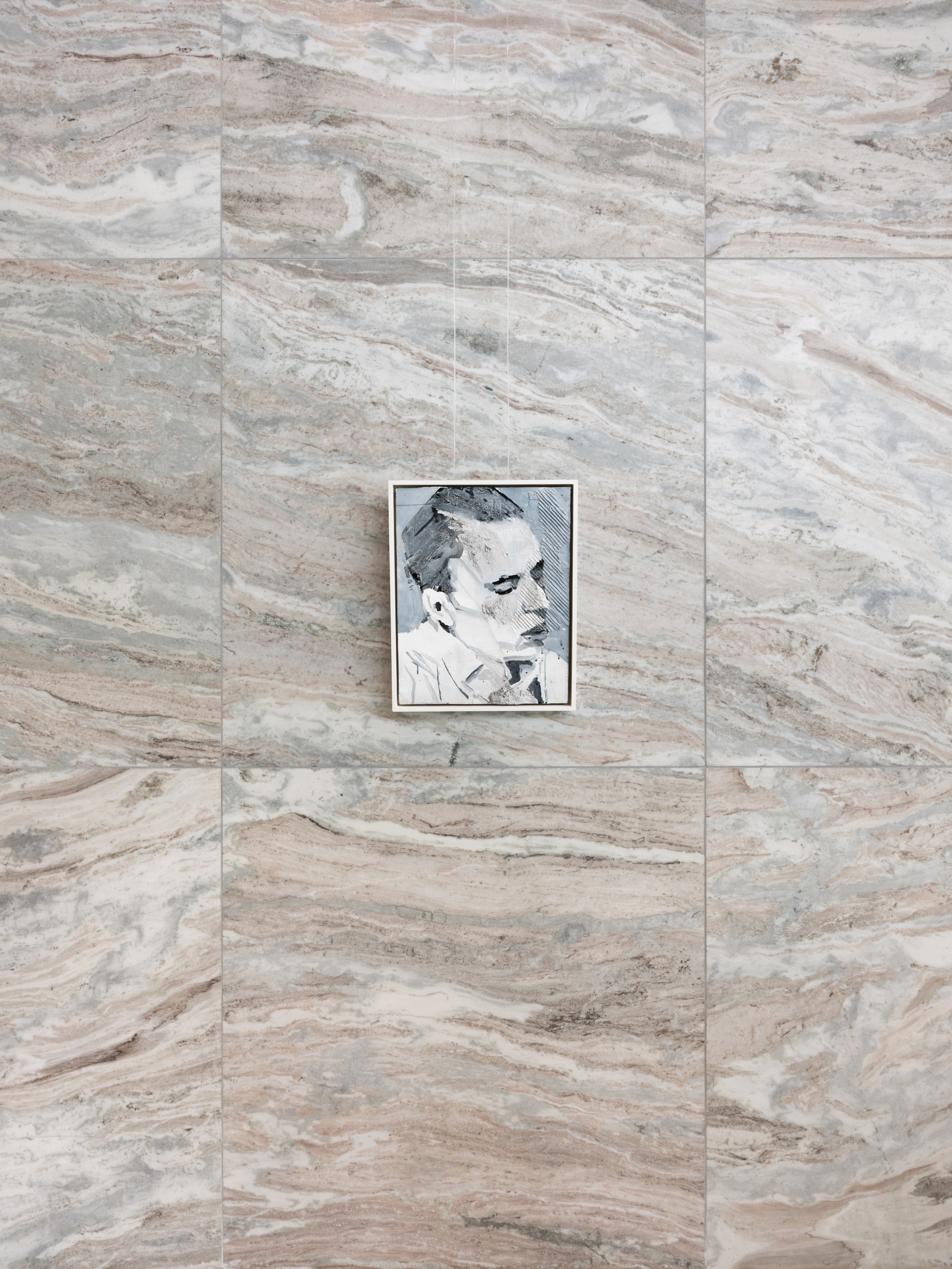




TAIPEI DANGDAI, 2024
SOM gallery, Booth DG07, May 9 until May 12, 2024.
SOM gallery featuring the works of Aldo van den Broek and Johnny Mae Hauser at TAIPEI DANGDAI artfair, Taiwan.This exhibition is a follow-up to the duo presentation, ‘UNDERCURRENT’, at the gallery in Tokyo late 2023.
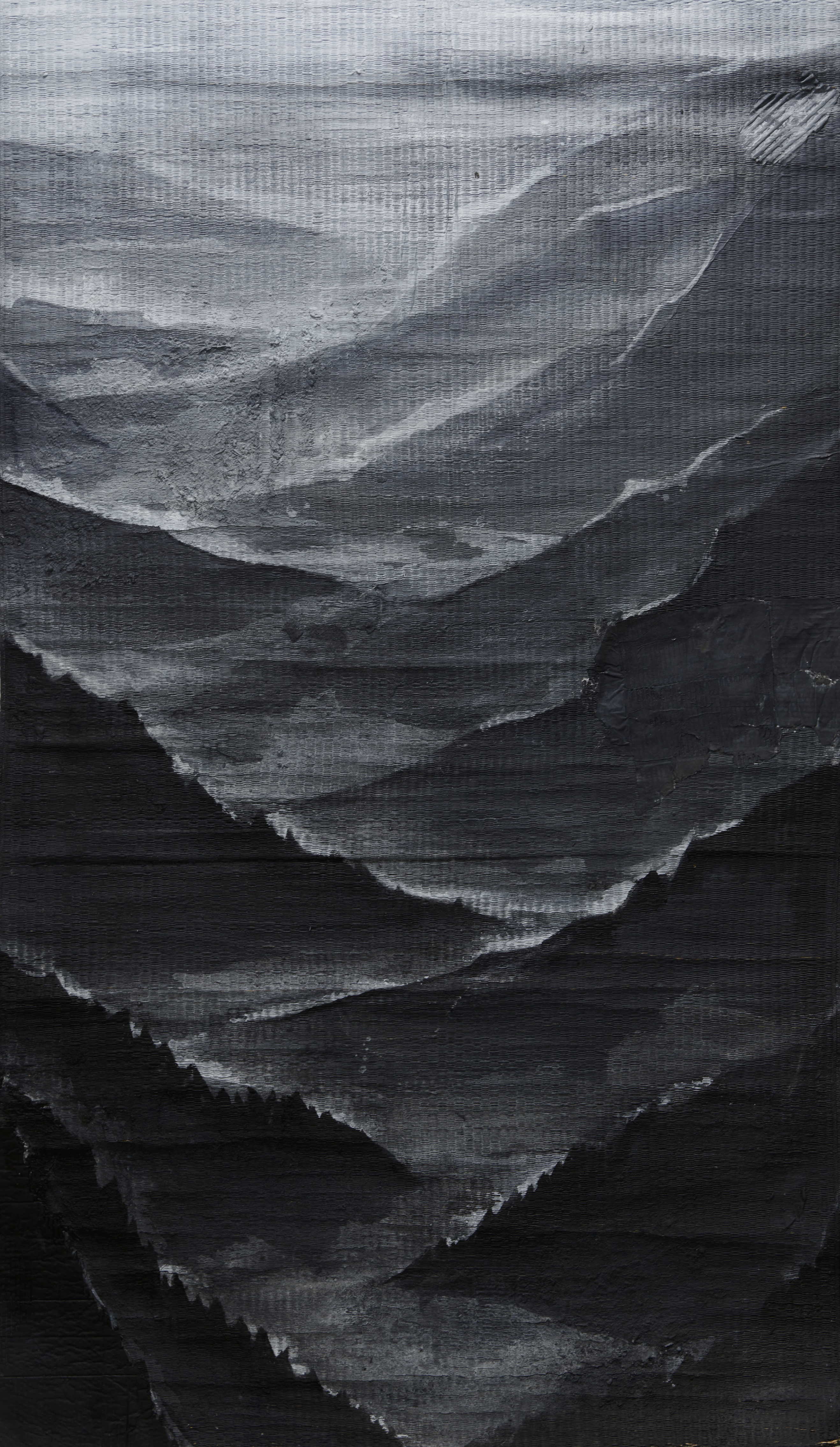

Undercurrent, 2023
Duo exhibition, SOM Gallery, Tokyo, Japan. September 29 / October 22, 2023.
Johnny Mae Hauser and Aldo van den Broek converge in the theme of "UNDERCURRENT" by spotlighting the quieter, often unnoticed facets of human life.
Hauser's photography captures the enigmatic realm of emotions with serene and introspective images, characterized by soft and cool color schemes. These visuals invite viewers to explore introspection, isolation, and emotional intimacy, challenging conventional ways of seeing photography.
In contrast, van den Broek navigates societal undercurrents through his textured artworks, often inspired by metropolises, desolate landscapes, and the mysteries of strangers. His choice of materials, such as discarded cardboard, wood, fabrics, plastic, and metals, breathes life into his pieces.
Both artists urge us to take a closer look at the subtleties of our own experiences, inviting a profound connection with the concealed currents of human existence.
ハウザーとヴァン・デン・ブロークは、本展示タイトルでもある「UNDERCURRENT」というテーマで、人間生活の平穏で、しばしば見過ごされる側面に焦点を当てることで共鳴しています。
ハウザーの写真は、ソフトでクールな配色を特徴とする静謐で内省的なイメージを持ち、人間が持つ感情の神秘的な領域を捉えています。
これらのビジュアルは、従来の写真の見方を超えて、鑑賞者に内省、孤独、感情的な親密さを探求するよう誘います。その結果、鑑賞者は、ハウザーの作品を見ているままに感じ取り、経験そのものに焦点を当てることになります。
対照的に、ヴァン・デン・ブロークは、大都会や荒涼とした風景、見知らぬ人々の謎めいた部分からインスピレーションをもらい、質感のある作品を通して、社会の奥底に存在するものを探求します。廃棄された段ボール、木、布、プラスチック、金属など、彼の素材選びは、作品に生命を吹き込みます。
両作家とも、私たちに自分自身の体験の機微な部分にじっくりと目を向け、人間という存在の隠れた奥深さに感受性を持って触れるよう強く促しています。



Vacuum, 2023
Solo exhibition, Vriend van Bavink Gallery, Amsterdam, The Netherlands. May 12 / June 24, 2023.
In Vacuum, Aldo van den Broek examines the fragility and resilience embedded within masculine identity—a recurring theme in his work. After diving deeper into his former projects, this exhibition was born from introspection, as van den Broek turned his gaze inward to question how masculinity navigates vulnerability. Sourcing cardboard and paper from decayed environments in Moldova, he layers their scars into his portraits, reflecting the emotional and physical pasts men often conceal. Masculinity, like any identity, is a construct—layered, fragile, and shaped by societal forces that both protect and constrain. “The cracks in concrete are more honest than a man’s face. We patch ourselves up to hide what’s already broken,” van den Broek reflects.
Rendered in stark black-and-white contrasts or bold grey color blocks, his works emphasize texture to reveal hidden tensions. The crumpled edges of cardboard and the weathered surfaces of paper transform his portraits into layered landscapes of fragility. These scars aren’t just physical—they are metaphors for the contradictions of masculinity, where decay and resilience exist side by side. Symbols of intellectual and emotional expression—pianos, poetry books, and other objects—amplify the dualities of sensitivity and machismo. “Strength and fragility are the same thing. The harder you try to hold one, the more you become the other.”
Van den Broek’s subjects, often averting their gaze, embody the discomfort of emotional exposure. In hyper-masculine spaces like stadiums, where homophobia reigns, men find fleeting permission to embrace. “Stadiums are temples of repression—where men, bound by homophobia, embrace only under the roar of victory. Tenderness disguised as triumph, fragility masked by aggression.”
Masculinity is more than personal—it reflects how society builds facades of power to hide the fragility of the structures beneath. Are we complicit in preserving these facades, or do we dare to confront the fragility they conceal—and the freedom that might emerge if they crumble? Vacuum forces us to confront not only what we hide from others but what we hide from ourselves.
In Vacuum, Aldo van den Broek examines the fragility and resilience embedded within masculine identity—a recurring theme in his work. After diving deeper into his former projects, this exhibition was born from introspection, as van den Broek turned his gaze inward to question how masculinity navigates vulnerability. Sourcing cardboard and paper from decayed environments in Moldova, he layers their scars into his portraits, reflecting the emotional and physical pasts men often conceal. Masculinity, like any identity, is a construct—layered, fragile, and shaped by societal forces that both protect and constrain. “The cracks in concrete are more honest than a man’s face. We patch ourselves up to hide what’s already broken,” van den Broek reflects.
Rendered in stark black-and-white contrasts or bold grey color blocks, his works emphasize texture to reveal hidden tensions. The crumpled edges of cardboard and the weathered surfaces of paper transform his portraits into layered landscapes of fragility. These scars aren’t just physical—they are metaphors for the contradictions of masculinity, where decay and resilience exist side by side. Symbols of intellectual and emotional expression—pianos, poetry books, and other objects—amplify the dualities of sensitivity and machismo. “Strength and fragility are the same thing. The harder you try to hold one, the more you become the other.”
Van den Broek’s subjects, often averting their gaze, embody the discomfort of emotional exposure. In hyper-masculine spaces like stadiums, where homophobia reigns, men find fleeting permission to embrace. “Stadiums are temples of repression—where men, bound by homophobia, embrace only under the roar of victory. Tenderness disguised as triumph, fragility masked by aggression.”
Masculinity is more than personal—it reflects how society builds facades of power to hide the fragility of the structures beneath. Are we complicit in preserving these facades, or do we dare to confront the fragility they conceal—and the freedom that might emerge if they crumble? Vacuum forces us to confront not only what we hide from others but what we hide from ourselves.




Komorebi, 2019 / 2023
In Komorebi, Aldo van den Broek examines the censorship of sexual expression within modern Japanese culture, juxtaposing it with more liberated Western perspectives. “A culture that worships cherry blossoms but censors desire—it’s a cemetery dressed as a garden,” van den Broek reflects. Using komorebi—light filtering through leaves—as a metaphor, he navigates the tension between visibility and repression, beauty and control.
Drawing from shunga, traditional Japanese erotic art that celebrates sexuality, van den Broek transforms explicit orgy scenes into semi-abstract color fields. By removing the lines, the sexuality dissolves into layered tones and textures. “You can’t unsee it. The lines are gone, but the sex is still there—raw, undeniable. Censorship doesn’t erase desire; it weaponizes it, forcing you to imagine, to want, to look harder.” This process reflects how censorship obscures but can never fully erase what it seeks to repress.
His sculptures, crafted from repurposed materials, embody komorebi. Fragile and translucent, they allow light to filter through, creating an illusion of freedom. Yet their thin walls and open layouts suggest how easily liberation can shatter under the weight of imposed boundaries. “Freedom filtered through rules isn’t freedom—it’s a prison with better lighting.” The cracks and translucency in the materials become metaphors for censorship itself—what we fear to show, and what struggles to escape.
Censorship isn’t unique to Japan. It’s a universal act of control, where societies create walls around desire to protect themselves from what they don’t understand. By intertwining shunga, sakura, and architectural motifs, van den Broek critiques how cultural norms shape identity and confronts limitations on sexual freedom. Komorebi asks: Are we complicit in building the shadows that censor intimacy, or do we dare to embrace what the light reveals?
Architecture, color, shunga and sakura research, Japan.
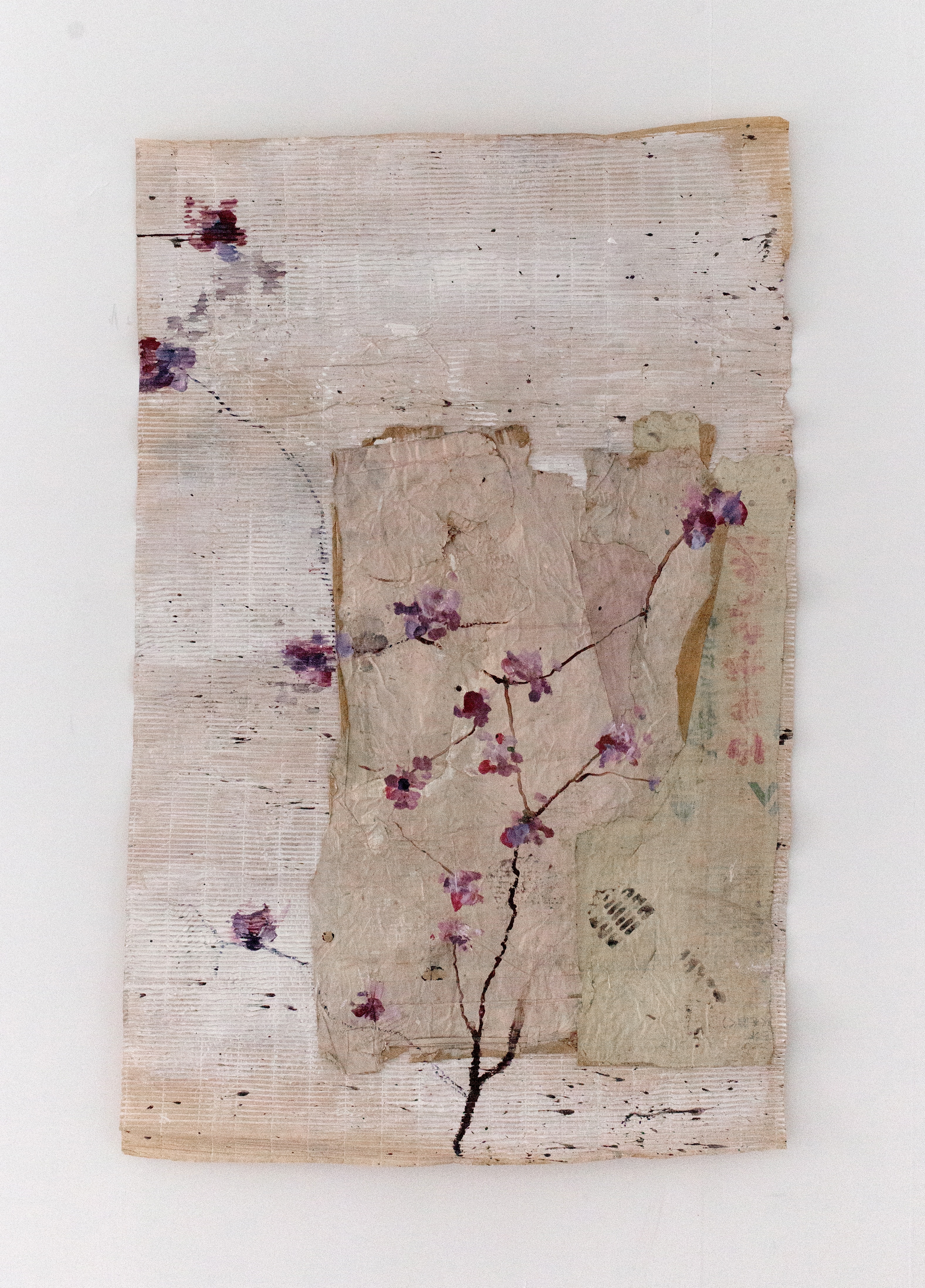



Palimpsest Tosca (Тоска), 2010 / 2024 (Ongoing)
In Palimpsest Tosca, Aldo van den Broek examines the decay of Soviet-era monogorods—towns constructed as symbols of collective strength and ideological permanence. Beginning in East Berlin in 2010, his journey has extended to Belgrade, Tbilisi, Chişinǎu, and Siberian cities, where monumental architecture crumbles, exposing the fragility of the ideologies that built them. “These buildings were built to shout eternity. Now they crumble and confess the lie—they were never meant to last,” van den Broek reflects.
Tosca—a Russian term for existential longing—anchors the project, embodying the collapse of collective dreams. It is not merely longing but the ache of living within a failed vision, where hope has faded but existence continues. Van den Broek’s sculptures, crafted from salvaged materials such as concrete fragments, torn propaganda, and discarded steel, evoke the tension between monumentality and fragility. “These scraps—they’re more truthful than the towers ever were. They carry failure and resilience in every jagged edge,” he explains. The muted grey tones of his works reflect the stark vulnerability of brutalist architecture, while their fractured forms mirror the collapse of ideology and the persistence of human survival.
Shifting focus from facades to interiors—tunnels, halls, and rooms still inhabited despite decay—van den Broek humanizes these spaces. Portraits of residents, ghostly figures, and remnants of propaganda suggest life persisting within collapse. “The concrete is collapsing, the posters are rotting, but the people refuse to disappear. Survival isn’t noble—it’s a fight against the failure of promises,” he states. These works transform decay into revelation, suggesting that “collapse doesn’t destroy—it exposes.”
These ruins are not simply relics of the past—they are warnings, reminders that every system built on permanence will eventually crack under its own weight. Van den Broek’s work forces us to ask: how do we live in the shadow of our own failing systems, and what will remain when their facades crumble?
Through Palimpsest Tosca, van den Broek invites viewers to reflect on the fragility of structures and the quiet resilience that emerges from their ruins. By reimagining these spaces through salvaged materials and haunting portraits, van den Broek captures the tension between loss and survival, monumentality and decay—ultimately challenging us to confront the impermanence of the systems we believe to be eternal.
Former Sovjet architecture and propaganda research. East Berlin, Germany / Belgrade, Serbia / Tbilisi, Georgia / Chişinǎu, Moldova / Many cities in Siberia.

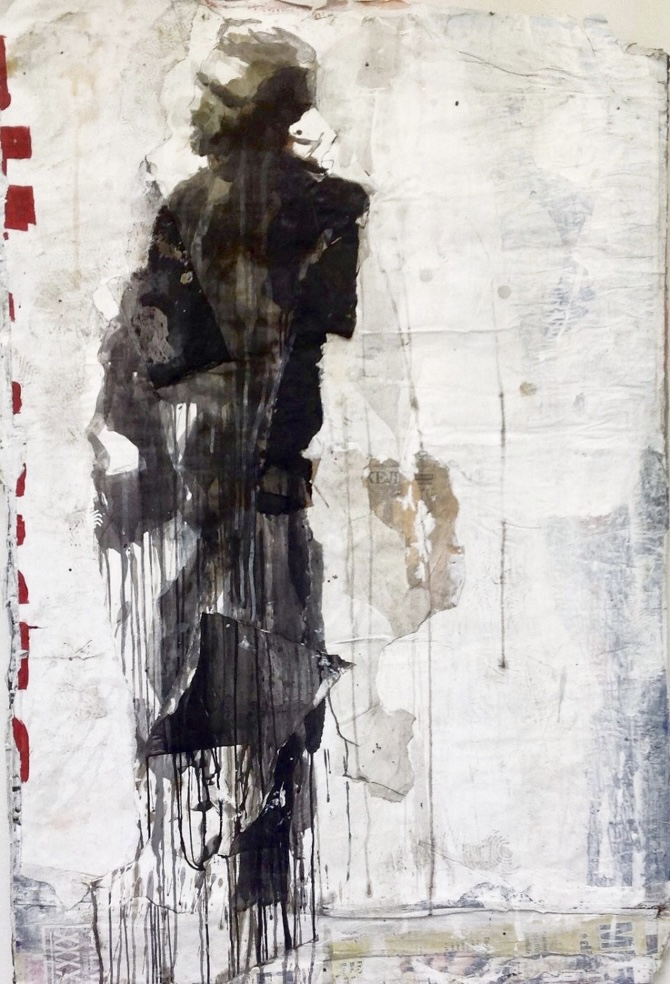










Kiss, Ride, Repeat, 2018 / 2024 (Ongoing)
Kiss, Ride, Repeat originated as a collaboration between Aldo van den Broek and photographer André van Noord, reflecting their bond through shared themes of mortality, addiction, and the cycles of life and death. During their 2017 work trip through East Germany, van Noord received a diagnosis of brain cancer. After his passing in 2018, van den Broek transformed the project for both into a profound meditation on impermanence and the urgency of artistic expression in the face of inevitable loss.
Driven by the need to create immediately, van den Broek utilized materials from his surroundings—such as hospital carpets and tree trunks—reflecting life’s fragility. The context in which these objects were used resonate with the essence of survival, prompting viewers to question how the remnants of life can embody strength.
The recurring symbol of the white horse signifies purity and the threshold between life and death. Initially a tribute to André, it evolves throughout van den Broek’s journeys through Mexico, guiding him through the transient nature of existence.
Influenced by Día de los Muertos, van den Broek incorporates dancing figures to celebrate the interplay of life and death, challenging Western conventions of mourning. A significant work in this series is a sculpture inspired by André’s final photograph in a tree. After his passing, van den Broek hollowed out a fallen tree, transforming it into a sarcophagus—an evocative symbol of life’s cyclical nature.
In 2025, Aldo van den Broek will start a commissioned follow-up to Marlene Dumas’s 2013 painting Nuclear Family, which was based on a self-portrait photograph of André and his family. While Dumas’s work focused on capturing immediate emotional connections, van den Broek’s piece will continue this exploration by examining how memory and absence influence the evolution of family legacies. His approach will delve into the lasting impact of loss and how relationships transform over time.





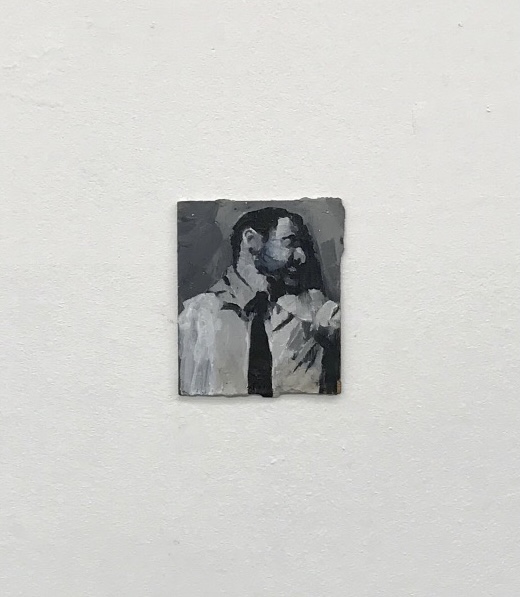









Beautiful distress, 2015
What happens when institutions meant to heal become systems that dehumanize? In Beautiful Distress, Aldo van den Broek explores the fragile relationship between mental health and institutional control during his residency at Kings County Hospital (KCH) in New York. As the city’s only free psychiatric facility, KCH reflects a system designed to care but constrained by mechanisms that reduce people to cases rather than lives. Van den Broek’s work lays bare the humanity buried beneath these structures, showing survival as both resilience and pain.
Gaining access to restricted psychiatric spaces—including children’s wards and prison units—van den Broek uncovered hidden narratives. A homeless man’s words encapsulate this harsh truth: “We don’t commit suicide; that’s because we are surviving.” These words echo through his work, exposing the quiet defiance of those who endure systems that fail them.
Van den Broek’s portraits, painted on discarded materials such as medication wrappers, pizza boxes, and cigarette packs, dissolve boundaries between patient, doctor, and street resident. “Pizza boxes and cigarette packs carry more soul than sterile walls,” van den Broek explains. “They’re marked by the hands of people the system forgot.” The wrinkled textures of wrappers and scuffed surfaces of pizza boxes become layers of stories, their imperfections echoing the lives they represent. By painting on what is thrown away, van den Broek mirrors the lives of those navigating these systems, showing that discarded objects often hold the deepest truths.
Through a video diary, van den Broek captured fragmented stories of trauma, resilience, and survival. The raw footage, interspersed with fleeting moments of connection and isolation, provides an unvarnished glimpse into the lives of individuals navigating these dehumanizing systems. “Leaving the hospital doesn’t free you—it leaves you stranded in a world that doesn’t care how you survived inside,”van den Broek reflects.
In Beautiful Distress, van den Broek challenges us to reconsider care—not as control, but as empathy and connection. His work forces us to confront not just the cracks in the systems we build but the ones in how we choose to see—or ignore—each other.
Kings County Mental Behaviour Center, Artist in Residence, New York, New york.


